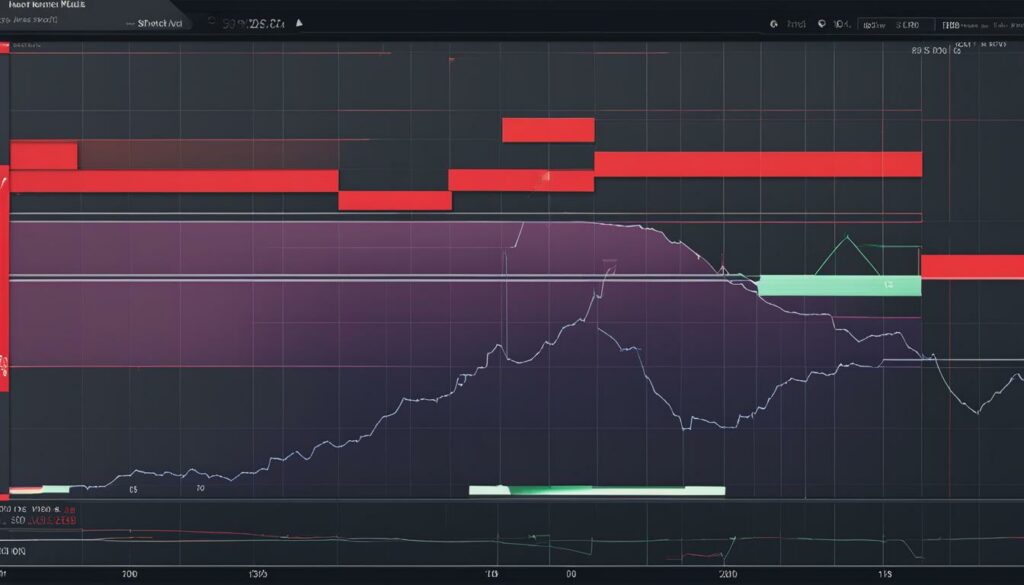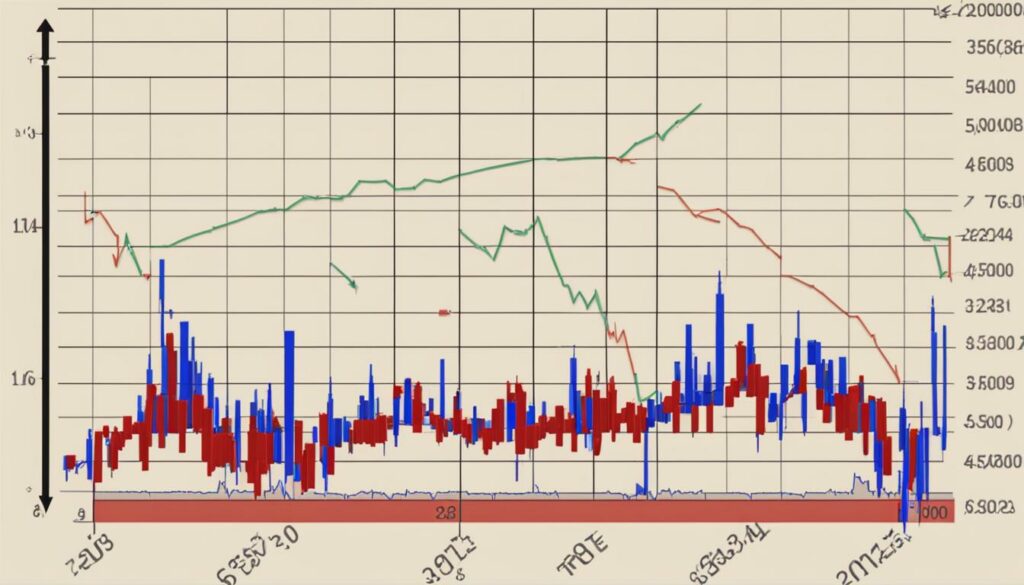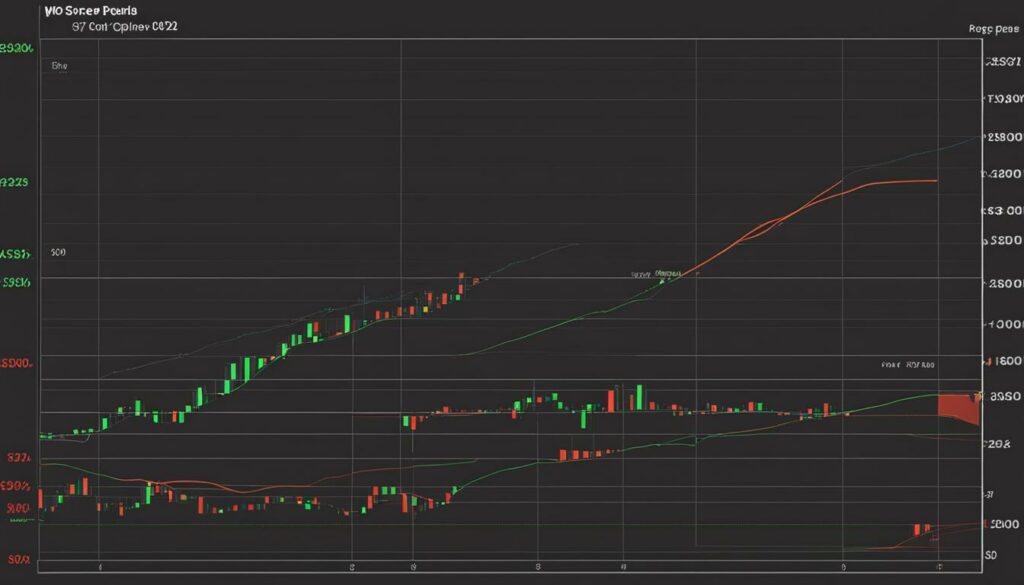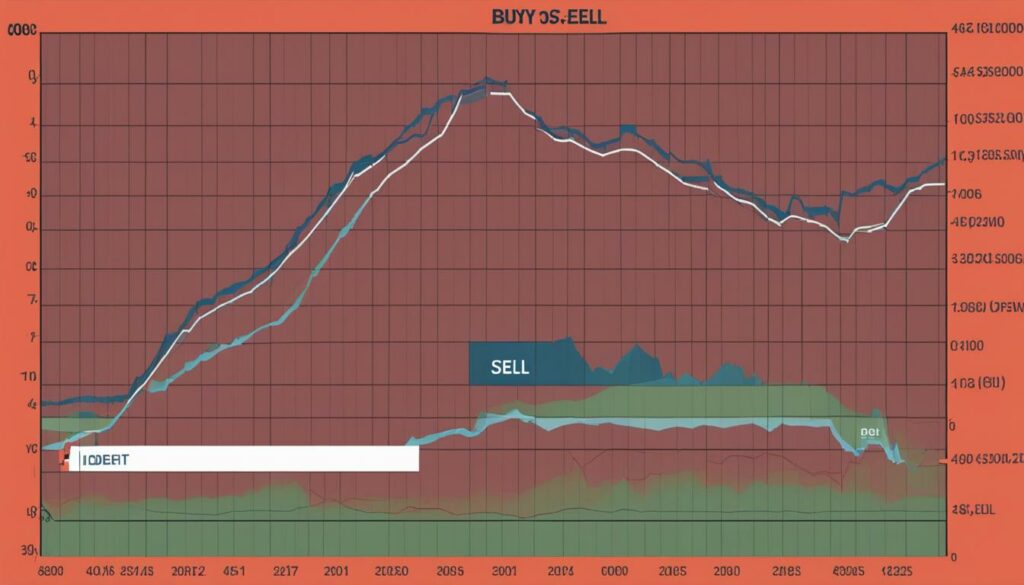Vertical Spread In Options Trading: What It Is, Why It Matters


Welcome to our comprehensive guide on vertical spreads in options trading. In this article, we will delve into the concept and significance of vertical spreads, explore different strategies, and discuss risk management techniques. Whether you are a seasoned options trader or just starting out, understanding vertical spreads is essential for enhancing your trading techniques and effectively managing risk.
Key Takeaways:
- Vertical spreads involve simultaneously buying and selling options with different strike prices.
- They provide a defined risk and reward profile, making them popular among options traders.
- Vertical spreads can be bullish, bearish, credit, or debit strategies.
- Strike price selection and risk management are crucial in vertical spread strategies.
- Customizing vertical spreads allows traders to align their strategies with their trading style and goals.
Understanding Vertical Spreads in Options Trading
A vertical spread is a popular options trading technique that allows investors to capitalize on market movements and manage risk. This strategy involves buying and selling options with the same expiration date but different strike prices. By understanding the basics of vertical spreads and mastering their execution, traders can enhance their options trading techniques and potentially increase their profits.
When forming a vertical spread, traders can choose between two types: debit spreads and credit spreads. A debit spread is created by purchasing an option with a higher premium and simultaneously selling an option with a lower premium. In contrast, a credit spread is formed by selling an option with a higher premium and buying an option with a lower premium.
The strike prices chosen for a vertical spread play a crucial role in determining the profit and loss potential. The strike price is the agreed-upon price at which the option can be bought or sold. Typically, the sold option has a strike price closer to the current market price of the underlying asset, while the purchased option has a strike price further away. This difference in strike prices creates a range within which the profit or loss is limited.


Example of a Vertical Spread Table
| Option Type | Premium (Buy) | Premium (Sell) | Strike Price (Buy) | Strike Price (Sell) |
|---|---|---|---|---|
| Debit Spread | $3.50 | $2.00 | $50 | $55 |
| Credit Spread | $1.50 | $3.00 | $50 | $45 |
As shown in the table above, a debit spread involves buying an option for $3.50 while selling another option for $2.00. The strike price for the purchased option is $50, and the sold option has a strike price of $55. On the other hand, a credit spread entails selling an option for $3.00 and buying an option for $1.50. The strike prices for the credit spread are $50 (buy) and $45 (sell).
Bullish Vertical Spreads: Exploring Bull Call Spreads
A bull call spread is a popular options trading strategy used by investors who have a bullish outlook on a specific stock or index. This strategy involves buying a call option with a lower strike price and simultaneously selling a call option with a higher strike price. The goal of a bull call spread is to benefit from an increase in the underlying asset’s price while limiting potential losses.
One of the key advantages of a bull call spread is its defined risk and reward profile. By purchasing the lower strike price call option, the trader has the right to buy the underlying asset at a predetermined price. At the same time, selling the higher strike price call option generates premium income, offsetting some of the cost of purchasing the lower strike price option.
To further manage risk, a bull call spread can be delta neutral with a gamma hedge. Delta measures the sensitivity of the option’s price to changes in the underlying asset’s price, while gamma measures the rate of change of delta. By maintaining a delta neutral position and applying gamma hedging techniques, traders can mitigate potential losses and adjust their positions as market conditions evolve.
Example of a Bull Call Spread
Let’s take a look at an example to illustrate how a bull call spread works:
| Strike Price | Option Premium (Buy) | Option Premium (Sell) |
|---|---|---|
| XYZ Stock | $50 | $55 |
| Profit/Loss | Limited | Limited |
In this example, an investor believes that XYZ stock, currently trading at $50, will increase in value. They purchase a call option with a strike price of $50 for $5 per share (total cost: $500) and simultaneously sell a call option with a strike price of $55 for $2 per share (total income: $200).
If the stock price rises above $55 at expiration, the investor’s profit potential is limited to the difference between the strike prices ($55 – $50 = $5) minus the initial cost paid for the spread ($5 – $2 = $3). If the stock price remains below $50 at expiration, the investor’s maximum loss is limited to the initial cost paid for the spread, which is $300 ($500 – $200).


- Investopedia
- Options Playbook
Bearish Vertical Spreads: Examining Bear Put Spreads
A bear put spread is a popular options trading strategy used by traders who anticipate a decline in the price of a particular stock or index. It involves buying a put option with a higher strike price and simultaneously selling a put option with a lower strike price. This strategy allows traders to profit from a downward move in the underlying asset, while also limiting potential losses.
By implementing a bear put spread, traders can take advantage of market bearishness while simultaneously reducing the cost of initiating the trade. The premium received from selling the put option with the lower strike price helps offset the cost of purchasing the put option with the higher strike price. This combination creates a defined risk and reward profile for the trade.
One notable aspect of bear put spreads is their ability to be delta neutral with a gamma hedge. Delta neutral means that the overall position’s delta is zero, resulting in minimal exposure to changes in the underlying asset’s price. This can be achieved by balancing the quantities of the put options bought and sold. Implementing a gamma hedge helps further manage risk by adjusting the position as market conditions evolve.


Example:
Consider a hypothetical scenario where an options trader believes that Company XYZ’s stock, currently trading at $50, is likely to decline in the near future. The trader decides to implement a bear put spread to capitalize on this anticipated downward move.
The trader buys a put option with a strike price of $55 for a premium of $3 and simultaneously sells a put option with a strike price of $45 for a premium of $1. By initiating this spread, the trader limits their potential losses if the stock price were to unexpectedly increase and also reduces the cost of the trade.
If the stock price drops below $45 at expiration, the trader will realize the maximum profit, which is the difference between the strike prices minus the net premium paid ($55 – $45 – $2 = $8). If the stock price remains above $55 at expiration, the maximum loss will be the net premium paid ($2).
By understanding the mechanics and advantages of bear put spreads, options traders can effectively navigate bearish market conditions and potentially profit from downward price movements while managing risk.
Credit Spreads: Generating Income with Vertical Spreads
Credit spreads are a popular options trading strategy that allows investors to generate income by collecting the net credit upfront. These vertical spreads involve selling an option with a higher premium and simultaneously buying an option with a lower premium. The premium received from selling the option is higher than the premium paid for the option purchased, resulting in a net credit.
One of the key advantages of credit spreads is their ability to benefit from time decay. As time passes, the extrinsic value of options tends to erode, leading to a decrease in their price. Credit spreads take advantage of this phenomenon by allowing traders to profit as the options approach expiration.
It’s important to note that credit spreads can be implemented in both bullish and bearish market environments. For a bullish credit spread, the investor would sell a put option with a higher strike price and buy a put option with a lower strike price. This strategy profits if the underlying asset’s price remains above the sold put option’s strike price.
On the other hand, a bearish credit spread entails selling a call option with a higher strike price and buying a call option with a lower strike price. This strategy is profitable if the underlying asset’s price stays below the sold call option’s strike price. By selecting the appropriate strike prices and carefully managing risk, traders can effectively utilize credit spreads to generate income and enhance their options trading strategies.


Table: Comparison of Bullish and Bearish Credit Spreads
| Bullish Credit Spread | Bearish Credit Spread | |
|---|---|---|
| Strategy | Sell higher strike put option, buy lower strike put option | Sell higher strike call option, buy lower strike call option |
| Profit | Underlying asset’s price stays above the sold put option’s strike price | Underlying asset’s price stays below the sold call option’s strike price |
| Risk | Limited to the difference between the strike prices minus the net credit received | Limited to the difference between the strike prices minus the net credit received |
In summary, credit spreads are a versatile options trading strategy that allows traders to generate income and benefit from time decay. By implementing bullish or bearish credit spreads with carefully selected strike prices, traders can capitalize on market conditions and effectively manage risk.
Debit Spreads: Capitalizing on Price Movements with Vertical Spreads
Debit spreads are a popular options trading strategy that allows traders to capitalize on price movements in the underlying asset. They involve buying an option with a higher premium and simultaneously selling an option with a lower premium. The cost of purchasing the option with the higher premium is partially offset by the premium received from selling the option with the lower premium, resulting in a net debit.
One of the key advantages of debit spreads is their ability to benefit from both directional movements and time decay. As the options approach expiration, the extrinsic value decreases, allowing traders to profit if the underlying asset moves in the desired direction. At the same time, the time decay works in favor of the trader, as the option with the higher premium loses value faster than the option with the lower premium.
It is important to note that debit spreads have their limitations. While they offer defined risk by capping potential losses to the net debit, they also limit potential profits compared to simply buying or selling the options individually. Traders must carefully analyze the market conditions, underlying asset’s price, and expected price movements before implementing debit spreads to ensure they align with their trading goals and risk tolerance.


Examples of Debit Spreads
Let’s take a look at two examples of debit spreads:
- Bullish Debit Spread: A trader expects a stock to rise in price and decides to implement a bullish debit spread. They buy a call option with a higher strike price and sell a call option with a lower strike price. The premium received from selling the lower strike call option partially offsets the premium paid for the higher strike call option. If the stock rises in price, the trader can profit from the price difference between the two strike prices.
- Bearish Debit Spread: A trader has a bearish outlook on a stock and decides to establish a bearish debit spread. They buy a put option with a higher strike price and sell a put option with a lower strike price. By receiving a premium from selling the put option with the lower strike price, the trader partially offsets the cost of buying the put option with the higher strike price. If the stock declines in price, the trader can benefit from the price difference between the two strike prices.
By carefully selecting the strike prices based on their market outlook, traders can effectively capitalize on price movements using debit spreads as part of their options trading strategy.
Managing Risk in Vertical Spread Strategies
Risk management is a critical aspect of options trading, particularly when it comes to vertical spread strategies. By implementing effective risk management techniques, traders can minimize potential losses and navigate the inherent volatility of the market. Here are some key considerations for managing risk in vertical spread strategies:
Setting Clear Risk Parameters
First and foremost, it is essential to establish clear risk parameters before entering into any vertical spread trade. This involves defining the maximum loss you are willing to accept and determining the appropriate position sizing to align with your risk tolerance. By setting these parameters upfront, you can maintain discipline and protect your overall portfolio.
Diversifying Positions
Diversification is another crucial aspect of risk management. Instead of putting all your eggs in one basket, consider spreading your trades across different stocks, sectors, or indices. By diversifying your positions, you can reduce the impact of any single trade or market event, mitigating potential losses and increasing your chances of overall success.
Monitoring Volatility
Volatility plays a significant role in options trading, and vertical spreads are no exception. It is important to closely monitor the volatility of the underlying asset as it can impact the performance of your vertical spreads. Higher volatility can lead to wider bid-ask spreads and increased option premiums, affecting the overall risk and potential profitability of your trades. By staying informed about market volatility, you can make informed decisions and adjust your strategies accordingly.
By incorporating these risk management techniques into your vertical spread strategies, you can enhance your chances of success and effectively navigate the dynamic options trading landscape.


The Importance of Strike Price Selection in Vertical Spreads
In options trading, strike price selection is a crucial factor that can greatly impact the outcome of vertical spread strategies. The strike price is the predetermined price at which the underlying asset can be bought or sold when the option is exercised. It plays a significant role in determining the potential profit and loss levels of a vertical spread, as well as the risk-reward ratio.
When selecting strike prices for vertical spreads, traders should consider various factors, including the current market conditions, the price of the underlying asset, and their outlook for the stock or index. It is important to choose strike prices that align with the desired strategy and risk tolerance.
To illustrate the significance of strike price selection, let’s consider an example:
Imagine you have a bullish outlook on Company XYZ and decide to execute a bull call spread strategy. The stock is currently trading at $50, and you believe it will rise to $60 within the next month. You consider two potential strike prices: $55 and $60.
If you choose the $55 strike price for the long call option, you can benefit from the stock’s potential appreciation up to $55. However, your maximum profit is limited to the difference between the strike price and the stock’s price at expiration.
On the other hand, if you choose the $60 strike price for the long call option, you have a higher maximum profit potential, as you can benefit from the stock’s appreciation up to $60. However, the likelihood of the option being in-the-money and profitable decreases as the stock price needs to rise higher to reach the strike price.
As shown in the example above, strike price selection can significantly impact the risk and reward dynamics of a vertical spread strategy. Traders must carefully analyze their expectations for the underlying asset and select strike prices that best align with their trading objectives.
| Benefits of Effective Strike Price Selection | Risks of Ineffective Strike Price Selection |
|---|---|
|
|
By carefully considering strike price selection in vertical spread strategies, traders can optimize their options trading strategy and increase their chances of achieving their desired outcomes.
Delta Neutral and Gamma Hedge in Vertical Spreads
The concepts of delta neutral and gamma hedge are crucial in effectively managing risk in vertical spread strategies. Delta, represented by the Greek letter Δ, measures the rate of change in the price of an option relative to the change in the price of the underlying asset. A delta neutral position is one where the combined delta of the options held is zero.
Traders can achieve delta neutrality by adjusting the ratio of options bought to options sold or by using other strategies such as stock or futures hedging. By maintaining a delta neutral position, traders can minimize their exposure to directional price movements and focus on profiting from other factors such as time decay and changes in volatility.
Gamma, represented by the Greek letter Γ, measures the rate of change in the delta of an option relative to the change in the price of the underlying asset. A gamma hedge involves adjusting the positions in a spread to maintain a desired delta neutral position as the price of the underlying asset fluctuates.
Gamma hedging is particularly important when trading options with shorter expiration periods as the delta of an option can change more rapidly. By actively rebalancing the delta of a position, traders can adapt to market conditions and effectively manage risk in their vertical spread strategies.


Pros and Cons of Delta Neutral and Gamma Hedge Strategies:
| Pros | Cons |
|---|---|
| Provides protection against directional price movements | Requires active monitoring and adjustment of positions |
| Allows traders to focus on other factors such as time decay and volatility | Can result in higher transaction costs due to frequent adjustments |
| Enables traders to adapt to changing market conditions | May limit potential profits if the underlying asset moves strongly in one direction |
“Maintaining a delta neutral position and applying gamma hedging techniques can help traders navigate the complexities of options trading and mitigate potential losses.” – Options Trading Expert
By understanding and implementing delta neutral and gamma hedge strategies, traders can enhance their risk management techniques and increase their chances of success in vertical spread strategies.
Customizing Vertical Spreads to Fit Your Trading Style
Vertical spreads offer a versatile options trading strategy that allows traders to tailor their approach to match their unique trading style, account size, time horizon, and risk tolerance. By customizing vertical spreads, traders can optimize their strategies to align with their individual preferences and investment goals, enhancing their overall trading experience.
When customizing vertical spreads, traders have various elements to consider. The first is determining the appropriate time frame for their trades. Some traders may prefer shorter-term trades, known as swing trading, while others may opt for longer-term positions. By selecting the ideal time frame, traders can align their vertical spread strategies with their desired trading duration.
Another crucial aspect to customize is the selection of strike prices. Traders must carefully analyze the current market conditions, evaluate the underlying asset’s price movements, and assess their outlook on the stock or index they are trading. By strategically choosing strike prices, traders can optimize their risk-reward ratio and better manage their overall position.
Additionally, traders need to define their risk parameters when customizing vertical spreads. This includes identifying the maximum loss they are willing to bear and setting stop-loss orders accordingly. By establishing clear risk parameters, traders can protect themselves from significant drawdowns and preserve their capital.
Ultimately, the key to customizing vertical spreads lies in understanding one’s trading style, account size, and risk tolerance. By leveraging the flexibility of vertical spreads, traders can create personalized strategies that suit their unique needs and empower them to navigate the options market with confidence.
Conclusion
Vertical spreads are a versatile options trading strategy that offers a range of benefits for investors. By employing vertical spreads, traders can effectively manage risk, generate income, and capitalize on price movements in the market. These strategies provide a defined risk and reward profile, making them suitable for both beginners and experienced options traders.
One of the key aspects of successful vertical spread strategies is risk management. Traders must carefully select strike prices, set clear risk parameters, and monitor market conditions to make informed decisions. By implementing delta neutral positions and applying gamma hedge techniques, traders can mitigate potential losses and adjust their positions as market conditions evolve.
The importance of strike price selection cannot be overstated in vertical spread strategies. The strike price determines the potential profit and loss levels of the spread, influencing the risk-reward ratio. Traders must consider current market conditions, the underlying asset’s price, and their outlook for the stock or index when choosing strike prices for their vertical spread strategies.
Overall, vertical spreads offer traders the flexibility to customize their strategies according to their trading style, account size, time horizon, and risk tolerance. By optimizing their vertical spreads to align with their individual preferences and investment goals, traders can enhance their overall investment strategy and navigate the world of options trading with confidence.
FAQ
What is a vertical spread in options trading?
A vertical spread is an options trading strategy that involves simultaneously buying and selling options of the same type and expiration date, but with different strike prices.
What are the types of vertical spreads?
The two main types of vertical spreads are debit spreads and credit spreads. Debit spreads involve buying an option with a higher premium and selling an option with a lower premium. Credit spreads refer to vertical spreads where the premium received from selling the option is higher than the premium paid for the option purchased.
What is a bull call spread?
A bull call spread is a vertical spread strategy used by investors who have a bullish outlook on a specific stock or index. It involves buying a call option with a lower strike price and selling a call option with a higher strike price.
What is a bear put spread?
A bear put spread is a vertical spread strategy employed by traders who have a bearish view on a particular stock or index. It entails buying a put option with a higher strike price and selling a put option with a lower strike price.
How do credit spreads work?
Credit spreads are vertical spreads where the premium received from selling the option is higher than the premium paid for the option purchased. This strategy allows investors to generate income by collecting the net credit upfront.
What are debit spreads used for?
Debit spreads are used to capitalize on price movements in the underlying asset. By buying an option with a higher premium and selling an option with a lower premium, traders can offset the cost of the purchased option with the premium received from the sold option.
How can risk be managed in vertical spread strategies?
Risk management in vertical spread strategies involves carefully selecting strike prices, setting clear risk parameters, diversifying positions, and closely monitoring the market to make informed decisions.
Why is strike price selection important in vertical spreads?
The strike price selection determines the potential profit and loss levels of the spread and influences the risk-reward ratio. Traders must consider current market conditions, the underlying asset’s price, and their outlook when choosing strike prices.
What is delta neutral and gamma hedge in vertical spreads?
Delta neutral and gamma hedge are risk management techniques used in vertical spread strategies. Delta measures the sensitivity of an option’s price to changes in the price of the underlying asset, while gamma measures the rate of change of delta.
How can vertical spreads be customized?
Vertical spreads offer flexibility, allowing traders to customize their strategies based on their trading style, account size, time horizon, and risk tolerance.







